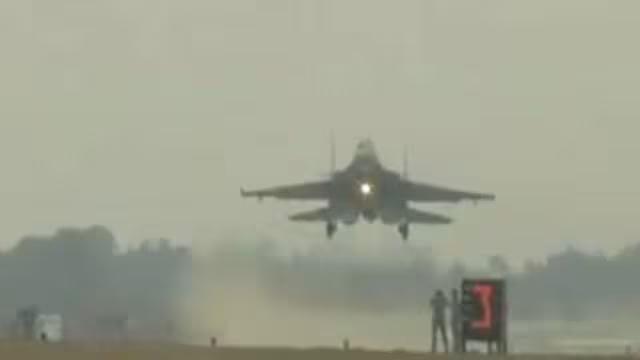
Why is IAF Conducting Fighter Jets’ Landing & Take-off Drill at Ganga Expressway in UP?
In a significant development, the Indian Air Force (IAF) conducted a landing and take-off drill of fighter jets on the Ganga Expressway in Uttar Pradesh, showcasing the expressway’s potential as an alternative runway during times of war or national emergencies. The exercise, which included fighter jets like Rafale, was a unique demonstration of the IAF’s capabilities and the expressway’s infrastructure.
The Ganga Expressway, built by the Uttar Pradesh government, is a 594-kilometer-long six-lane expressway that connects Noida to Ballia. The expressway is not only a major transportation artery but also has the potential to serve as a strategic airbase in times of crisis. The IAF’s decision to conduct the landing and take-off drill on the Ganga Expressway highlights its importance as a potential airbase.
The exercise, which was carried out during the day and night, involved fighter jets like Rafale, Su-30, and MiG-29, taking off and landing on the expressway. The IAF pilots navigated the aircraft with precision, demonstrating their exceptional skills and the capabilities of the fighter jets. The exercise was a testament to the IAF’s readiness to adapt to any situation and its ability to operate from unconventional locations.
The Ganga Expressway is the first airstrip on any expressway in India equipped to handle both day and night landings of jets. The expressway’s infrastructure, including its high-quality runway and taxiways, is designed to accommodate the landing and take-off of fighter jets. The exercise demonstrated the IAF’s ability to operate from the expressway, even in challenging weather conditions.
The IAF’s decision to conduct the drill on the Ganga Expressway is significant for several reasons. Firstly, it highlights the importance of the expressway as a potential airbase in times of war or national emergencies. The expressway’s location, which is connected to major cities like Delhi and Lucknow, makes it an ideal location for a strategic airbase.
Secondly, the exercise demonstrates the IAF’s ability to adapt to unconventional locations. In times of crisis, the IAF may need to operate from locations that are not traditional airbases. The Ganga Expressway’s infrastructure and the IAF’s capabilities make it an ideal location for the IAF to operate from.
Thirdly, the exercise showcases the IAF’s readiness to respond to any situation. The IAF’s ability to conduct landing and take-off drills on the Ganga Expressway is a testament to its preparedness to respond to any threat or crisis.
The Ganga Expressway’s potential as an alternative runway has significant implications for the country’s national security. In times of war or national emergencies, the expressway can serve as a strategic airbase, providing the IAF with an additional capability to respond to threats.
The exercise also has significant implications for the development of infrastructure in the country. The Ganga Expressway’s infrastructure, including its runway and taxiways, is designed to accommodate the landing and take-off of fighter jets. The exercise demonstrates the importance of infrastructure development in supporting the country’s national security.
In conclusion, the IAF’s decision to conduct a landing and take-off drill on the Ganga Expressway is a significant development that highlights the expressway’s potential as an alternative runway during times of war or national emergencies. The exercise demonstrates the IAF’s ability to adapt to unconventional locations, its readiness to respond to any situation, and the importance of infrastructure development in supporting the country’s national security.
Source:






